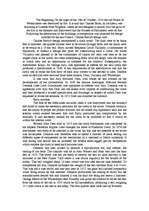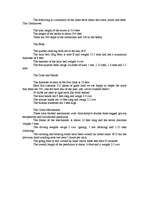The Beginning On the night of the 16th of October, 1834 the old Palace of Westminster was destroyed by fire. It is said that Charles Barry, an architect, was returning to London from Brighton, where he had designed a church, saw the glow of the fire in the distance and discovered that the Houses of Parliament were on fire. Following the destruction of the buildings, a competition was launched for design suitable for the new Palace. Charles Barry's design won.
Charles Barry's design incorporated a clock tower. The dials were to be thirty feet in diameter, the quarter chimes were to be struck on eight bells, and the hours were to be struck on a 14 ton bell. Barry invited Benjamin Lewis Vulliamy, a clockmaker of reputation, to submit a design and price for constructing such a clock. No doubt Vulliamy was pleased to be the clockmaker of choice for what was then to be the largest clock in the world, but other enterprising firms were not happy with the manner in which they had no opportunity to compete for the contract. Subsequently, the Astronomer Royal, Sir George Airy, was appointed as referee for the new clock and produced a specification in 1846. A key requirement of the specification was that the clock was to strike the first blow of each hour correct to one second in time. Tenders were invited and were received from three makers, Dent, Vulliamy and Whitehurst.
It was clear that Airy favoured Dent, with whom he had worked on the development of the chronometer. In 1849 the famous horologist, Edmund Beckett Denison (later Lord Grimthorpe) was appointed co-referee with Airy. Denison was in agreement with Airy that Dent was the maker most capable of constructing the clock and they produced a revised specification and drawings, in respect of which Dent was requested to revise his estimate. In 1852 Dent was awarded the contract.
Early troubles
The first of the difficulties occurred when it was discovered that the architect had failed to make the necessary provision for the clock in the tower. Denison certainly had the ability to propel the project forward, but he lacked any diplomatic skill and the tension which existed between him and Barry precluded any compromise by the architect. It was necessary instead for the clock to be modified so that it would fit within the internal walls.
…
Par Londonas Big ben





